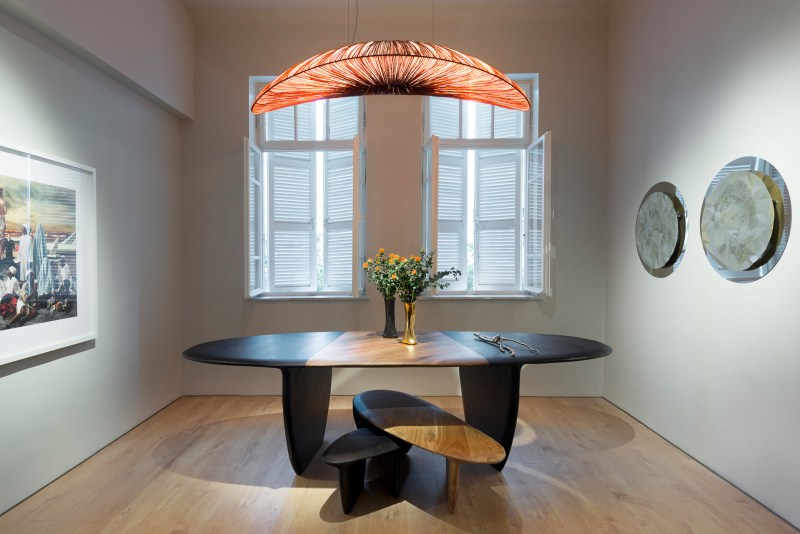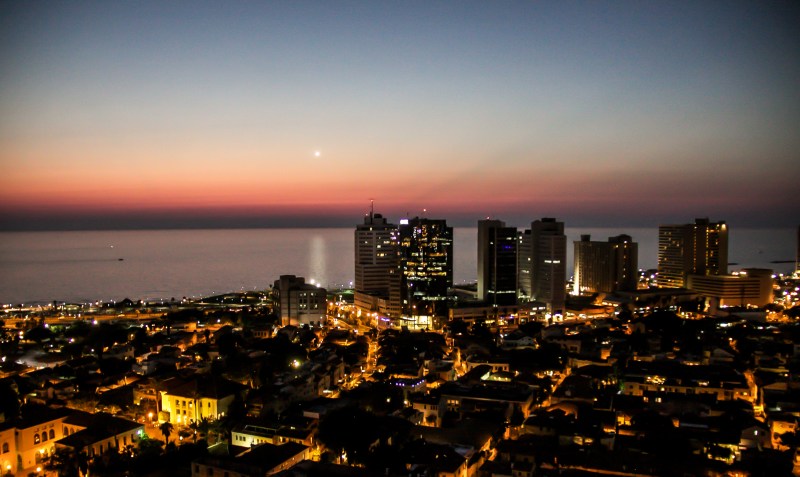“Please go back and tell your friends we do not ride on camels,” a Tel Aviv friend implored me as I was about to depart my first stay in the Holy Land the summer of 2010 – which stretched out to a euphoric three months, though planned for one week. But there’s so much adrenaline there – culture, food, art, fashion, design – that it made my hometown of L.A. feel like an arid cultural wasteland, with its early nights and semi-sobriety.
Eight years later, L.A.’s picked up – but in my six trips in eight years – the most recent, end of 2017 – Tel Aviv’s emerged as the most exciting city in the world. All traces of camel riding – even holiness – have been replaced by upscale hedonism. After all, in a seventy-year-old country that’s been on the verge of extinction since emergence, sex, drugs, art and fine food might as well be imbibed in excess. “Life is short” is the Israeli excuse for indulgent behavior. “It’s got more sex than anywhere in the world,” a local told me. And when you look at all those gorgeous men and women, it’s easy to figure out why monogamy is so yesterday in Tel Aviv. Orgies aren’t unusual. Friendly debauchery is everywhere. Maybe that’s why Madonna has a 20 million dollar pad there.
Even city’s best (old) hotels were dumps eight years ago, but now there’s a panoply of boutique hotels. My standby is the art deco Montefiore, in the heart of the upscale Rothschild district (the Upper East Side of the Mideast). It only has twelve rooms, making it cozy – and the restaurant is a great scene (I spotted Audrey Tatou) with an Israeli interpretation of French Vietnamese food. I also love all the Brown Hotels, at various locales around the city: Brown TLV was the first, and very showbiz friendly; The Poli House is a forty room “experimental luxury hotel” (which translates to dissonant colors) with a panoramic rooftop pool, cocktail bar, restaurant and killer spa. I’ve also stayed at the Norman – the place where Hollywood execs of Homeland, HBO etc hangout in town. The brand spanking new Setai Tel Aviv will open in February in Jaffa, the ancient port city that’s Ottoman-centric – and the hotel reflects that. It has five buildings, 120 rooms, and was created under strict historic preservation guidelines. When the doors open, the rush will start. Tel Aviv, the new New York, is now all about new.


RESTAURANTS
Sure, there’s myriad versions of Mediterranean/Middle East/fusion cuisine – even the street food: falafels, ice cream, bialys with rare Arabian spice zata – taste better there than anywhere else – but cult star chefs are proliferating with demand, and you’ll find Israeli style sushi (yes), pastas, fresh fish and best egg dishes outside of a Kentucky farm. Israeli breakfasts are legend: yogurt, tomato/egg shakshuka, olive tapenade, exotic crackers and breads, the freshest juices, cereals, fruit, local Bulgarian white cheese.
My particular faves are The Blue Rooster, atop highrise G Tower: chef Saul Ben Aderet goes heavy on the fresh mushrooms, eggplant, and the pan of shrimp in tomatoes, paprika and garlic sauce pretty much kills me. You’ll see models and musicians – and you might even catch Mick Jagger when he’s in town. Cantina in the Rothschild district, for pizza and pasta, is populated by Tel Aviv fashion designers, tv and film execs, music people and architects. I ran into former Lanvin designer Alber Elbaz there one night (he went to Tel Aviv’s great fashion academy, Shenkar – one of the world’s best). Blue Sky at the Carlton Hotel Tel Aviv is also high up with killer views of the sea and skyline. Torquoise – or Turkiz – in Jaffa on the water has the best sushi and spicey tuna outside of Nobu. Brasserie reminds me of the old Odeon in NY: open 24 with all night brasserie fare like omelets and burgers and fries.
The café scene’s a mini Paris – with much stronger coffee. Trust me. Hafuhk is upside down cappuccino – just go with it. CoffeeBar has room for a thousand and the coriander yogurt and tomatoes salsa are crave-worthy. And don’t even think about not eating bread in this town. Go carb-free when you get home.

The markets in Tel Aviv are a must for vintage pieces, furniture, earrings, exotic tea and fruit – and food far superior to Whole Foods and Dean and Deluca. Sarona Market is just a few years old: check out the cheese, nuts, olive oil –and at Cookie Bucket, you can just load up a bag of hundreds of varieties. At the Old Port, there are stalls and restaurants that are that rare triple threat: good, fast and cheap. The Carmel Market in central Tel Aviv has everything you’d ever want – and yes, sharper your bargaining skills– and the old Jaffa flea market is like an Ottoman-influenced Clignancourt on the water.

“Cavernous” gallery spaces showcasing local artists. (Ross Belfer/Tel Aviv Design Guide.)
SHOPPING
You don’t think of Tel Aviv as a place to buy clothes: but the shoe designers are particularly interesting (they come out of Shenkar) – and you can snag a killer pair for two hundred bucks that look like Clergerie or Marni. At Jaffa’s Old Train Station (Hatachana Compound), built in the twenties, there are dozens of stores by local jewelry designers, fashion designers, toys, books – and dozens of restaurants. The Nvet Tzedek neighborhood is Tribeca/DTLA equivalent: colorful, architecturally fascinating, and full of funky designer shops. Now, the best – and almost secret – shopping find of TA is Boutique Hamartef, without good signage, at King George Street and Allenby. Walk downstairs and gasp at the variety of steals on Rick Owens, Gucci, Balenciaga, Dior, Margiela – and the shoes!!! Dries Van Noten shoes are hard to find even in the U.S.! Almost nothing’s priced higher than two hundred bucks.

clothes. (Ross Belfer/Tel Aviv Design Guide.)

ART/LANDMARKS
The galleries are open late for strolling art lovers – Gal Gaon in the Lev Hair hood and Gordon Gallery (restored from the ruins of a warehouse) are just two of the best – Tel Aviv is rife with painters, sculptors and art photographers. About twenty minutes outside the city proper, The Holon Design Museum stages unique shows on fashion, advertising, city planning, packaging – in a great modern structure. And the TA Bauhaus architecture walks will quickly catch you up on the White City – mostly white buildings with requisite charming shabbiness.
A pebble side by side table by Gal Gaon. (Ross Belfer/Tel Aviv Design Guide.)
Tel Aviv Museum of Art.


CLUBS/BARS

Many of the clubs are just oversized restaurants with late-night dancing, mostly in the Lillenblum neighborhood. But the most fun is Nanuchka, which has vegan food – and bar top dancing starting about eleven. I never thought I’d be the kind of person to dance on a table – but a bar? That’s something else. Bars are proliferous in TA: deco, post-modern, it’s all there. 223 on Dizengoff is a mixologists’ wonderland: The Passion Fruit 2006 (vodka, ginger, apricot brandy, passion fruit) and the Vieux Carre’ (rye, vermouth, cognac, bitters) are standouts in a town with an incredible cocktail culture. Lucifer, BuXa and Aria Lounge follow suit, with better music.
This article appeared in an InsideHook newsletter. Sign up for free to get more on travel, wellness, style, drinking, and culture.

























